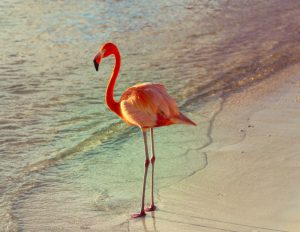Flamingos, with their striking pink plumage and graceful demeanor, are one of the most iconic bird species. Their unique characteristics and social behaviors have captivated observers for centuries. Understanding their lifespan is crucial for conservation efforts and ensuring their survival.
Average Lifespan of Flamingos
In the wild, flamingos typically live for around 20 to 30 years. However, their lifespan can vary significantly depending on various factors, including their environment, diet, and health.
Factors influencing their lifespan:
- Predators. Flamingos face threats from predators such as crocodiles, foxes, and birds of prey.
- Food sources. Access to sufficient food is crucial for their survival. Fluctuations in food availability can impact their longevity.
- Environmental conditions. Extreme weather events, habitat loss, and pollution can pose significant risks to their health and lifespan.
Flamingos kept in zoos and sanctuaries often live longer than their wild counterparts. With access to veterinary care, controlled environments, and a consistent food supply, they can reach an average lifespan of 40 to 50 years.
Benefits of captivity on longevity:
- Medical care. Zoos and sanctuaries can provide specialized medical treatment for diseases and injuries.
- Controlled environment. Captive flamingos are protected from many of the threats they face in the wild, such as predators and extreme weather.

Factors Affecting Flamingo Lifespan
Flamingo lifespans are influenced by various factors, starting with environmental conditions. Habitat destruction and climate change disrupt their wetlands and food sources, while shifting migratory patterns due to climate alterations create survival challenges.
Diet and nutrition are crucial for their health. In the wild, flamingos struggle with finding sufficient food during droughts or in polluted areas. Captive flamingos, however, benefit from carefully managed diets that support their well-being.
Predators and human-induced threats also impact flamingos. Natural predators threaten flamingos at all life stages, and human activities such as pollution, habitat loss, and entanglement in fishing gear further jeopardize their longevity.
Common Health Problems in Flamingos
Flamingos face several health challenges that can impact their well-being and lifespan. Common diseases affecting these birds include avian influenza, various parasites, and bacterial infections. Symptoms of illness often manifest as lethargy, weight loss, and abnormal behavior. Treatment typically involves medication, supportive care, and sometimes quarantine to prevent the spread of disease.
In addition to diseases, flamingos are also susceptible to injuries from accidents. These injuries can occur from collisions with objects or entanglement in debris. Such injuries can significantly affect a flamingo’s lifespan, especially if not treated promptly or if they lead to long-term disabilities. Proper medical care is essential to mitigate the impact of these injuries and help ensure the flamingos’ continued health.

Conservation Efforts and Their Impact
Conservation efforts have made significant strides in improving the lifespan and health of flamingos. Organizations dedicated to preserving flamingo habitats are actively working to protect and restore critical wetlands and other environments essential for these birds. These efforts are crucial in ensuring that flamingos have access to the resources they need to thrive.
In addition to habitat protection, various initiatives aim to address health issues and enhance flamingo longevity. Veterinary care, effective habitat management, and captive breeding programs are integral to improving survival rates and addressing common health problems faced by flamingos.
Success stories from conservation projects highlight the positive impact of these efforts. For instance, habitat restoration initiatives in the Caribbean have proven successful in safeguarding nesting colonies and increasing nesting success. Such projects not only boost flamingo populations but also contribute to their overall health and longevity.

The average lifespan of flamingos can vary depending on factors such as their environment, diet, and health. While captive flamingos often live longer than their wild counterparts, both groups face significant challenges. Conservation efforts are crucial for protecting flamingo populations and ensuring their long-term survival. Continued research and monitoring of flamingo populations will be essential for understanding their needs and developing effective conservation strategies.

